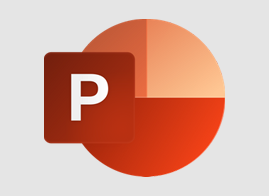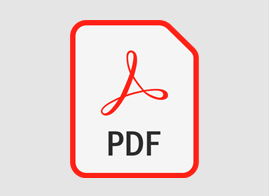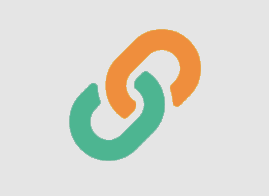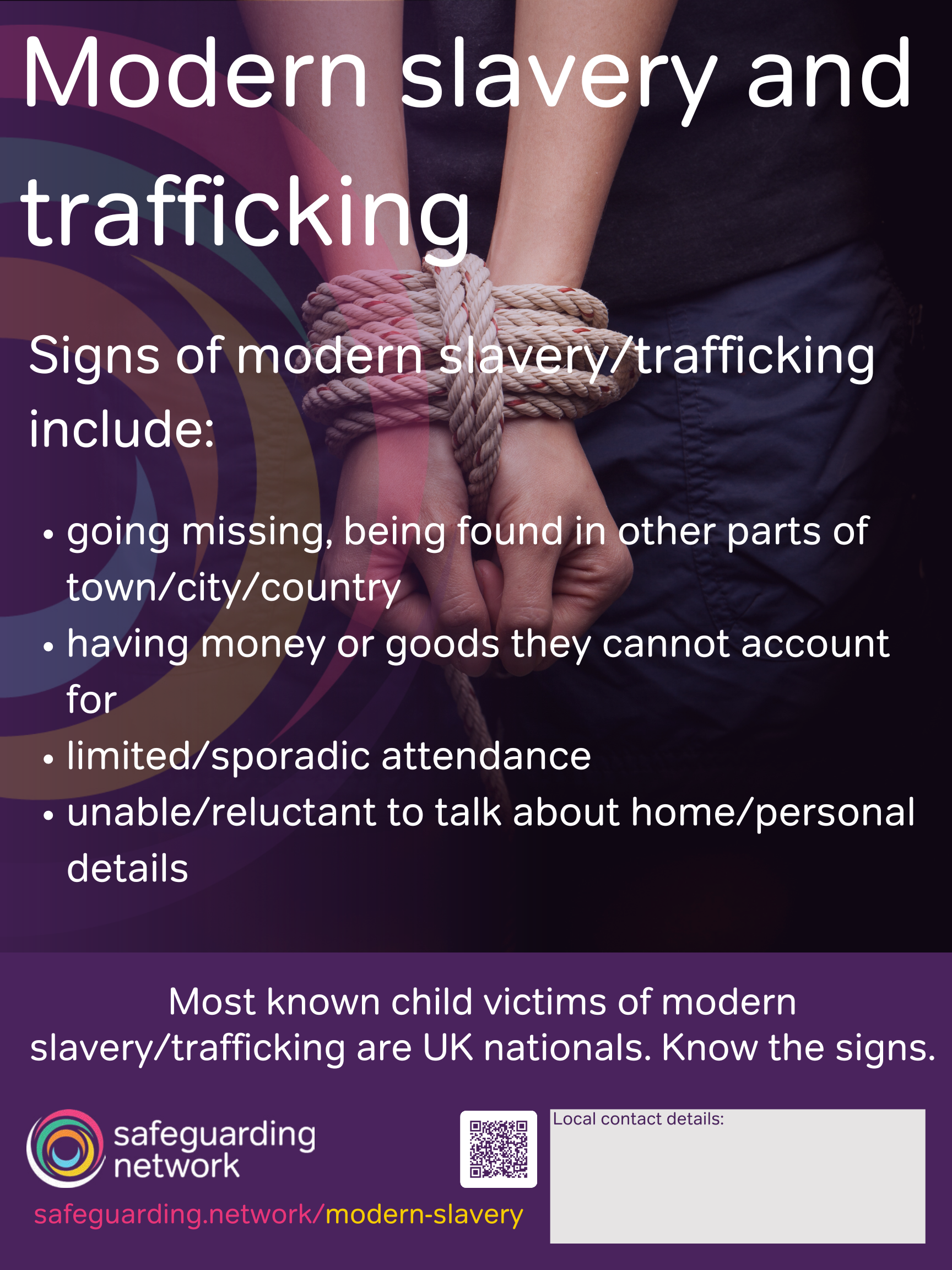Introduction
Modern slavery is mostly a hidden crime, and to get a true picture of its prevalence is challenging. It is an umbrella term and includes human trafficking. Trafficking does not necessarily involve travel to another country or even long distance nationally. A child can be trafficked within their local area, especially for child sexual exploitation and child criminal exploitation (including county lines). Exploitation can also include forced labour, domestic servitude, or the removal of a person’s organs.
Need more?
Thank you for visiting our resources pages. These are free to everyone as is our fortnightly safeguarding bulletin – general safeguarding information is too important to restrict. Become a member to access lots more, including training materials for you to deliver in-house on each topic in Keeping Children Safe in Education.
Sign up for FREE fortnightly bulletin.
What about training?
We can deliver training for your setting on this and other subjects via online platforms, or face-to-face in certain areas. Just get in touch to discuss your requirements.
The Office for National Statistics identifies that whilst the majority of children referred to the National Referral Mechanism were aged between 15-17, nearly 800 were younger, with 7 children being under 5 years old at the point of referral. Examples of what children and young people were referred for include county lines, sexual exploitation and labour exploitation.
The annual assessment for Unseen’s Modern Slavery and Exploitation Helpline in 2023 found:
- Calls to the Helpline and contacts via the service’s web form and app rose by more than 19%.
- Potential victims of modern slavery indicated in the care sector rose by 30%.
- A 5% increase in cases involving minors, a 3% increase in minor potential victims, and 10% of modern slavery cases raised by the Helpline involved minors.
- In general, labour exploitation remains the most prevalent exploitation type, followed by sexual exploitation, criminal exploitation, and domestic servitude.
Some trafficked children are hiding in plain sight, while others are never seen. To safeguard children and young people from modern slavery and trafficking requires a multi-agency response that includes education settings, community groups, members of the public, health services and the police.
Definition of modern slavery
“An umbrella term for activities involved when one person obtains or holds another person in slavery or servitude, or requires another person to perform forced or compulsory labour.”
Adapted from the Modern Slavery Act, 2015
Definition of human trafficking
“Human Trafficking is the recruitment, transportation, transfer, harbouring or receipt of people through force, fraud or deception, with the aim of exploiting them for profit.”
Types of modern slavery
Other than trafficking, modern slavery can include:
- domestic servitude;
- sexual exploitation;
- forced marriage;
- child exploitation;
- criminal exploitation
- debt bondage;
- forced labour - common areas where labour exploitation takes place include food processing; factories; construction; car washes, farming; nail and beauty salons; fishing and seafood processing; and hospitality and tourism;
- organ harvesting.
Trafficking is exploitation
Trafficked children experience multiple forms of abuse and neglect, and the forms of abuse may overlap.
Child trafficking differs from that of adults in that a child cannot give informed consent to their exploitation, regardless of whether they seemingly agree to travel or genuinely understand the situation. Evidence of coercion or deception does not need to be present to prove an offence although, in reality, coercion and deception, etc., are likely to have been used to groom child victims.
Additional vulnerabilities
Anyone can be vulnerable to modern slavery and/or being trafficked, however, there are some children that we know are more likely to become victims of this abuse than others, including:
- refugees and migrant children;
- children in care;
- children who are not in the care of their parents/legal guardians;
- those with links to criminal networks;
- those missing from home and/or education;
- children with additional needs;
- excluded children;
- children with chaotic home lives;
- children living in poverty;
- children living with substance misuse.
Spot the signs
Many of the signs are like those we see with any abusive situation; however, some specific considerations relate to children who:
- are in situations where you do not know who holds parental responsibility (see also private fostering);
- are missing from education and/or home;
- have unbelievable or surprising accounts of how they are in the country;
- have parents working without pay;
- are involved in inappropriate work;
- display multiple or repeated injuries;
- have tattoos or other marks indicating ‘ownership’;
- distrust authority;
- show recurring symptoms of poor physical, sexual and emotional health;
- display indicators of child exploitation.
- are not registered with a school or a GP practice;
- do not have any documents (or have falsified documents);
- stay out overnight with no explanation;
- are seen getting into unknown cars or taxis;
- experience a breakdown of residential placements due to their behaviour;
- have money or goods, including mobile phones, drugs and alcohol, that they cannot account for;
- experience multiple sexually transmitted infections, miscarriages or terminations;
- are self-harming;
- misuse substances;
- are involved in criminal activity;
- spend lots of time doing household chores, rarely leave their house, and have no time for play.
Barriers to disclosure
Potential victims may:
- be scared or reluctant to come forward with information, not being sure who to trust;
- not recognise themselves as having been trafficked, exploited or enslaved;
- tell confused stories with obvious errors.
It is not uncommon for perpetrators to provide stories for victims to tell if they are approached by the authorities. Errors or unrealistic stories may be because they have had to memorise false histories that have been composed by others.
What to do
Modern slavery and the trafficking of children is child abuse, therefore normal child protection procedures apply.
Many children are trafficked ‘in plain sight’ – e.g., perpetrators of sexual/criminal exploitation have been known to pick children up from their education settings during lunch break and return them just before afternoon registration – yet the children remain invisible in terms of help and support.
Some children are hidden, never seen outside their homes or workplaces. Protecting them and promoting their welfare depends upon the awareness and co-operation of education settings, community groups and members of the public. Safeguarding trafficked children is very much everyone’s business and requires a community response, particularly in high-risk areas.
Create an environment based on equality and informed choice – help young people think about the issues and attitudes behind trafficking and modern slavery.
Ensure young people know the risks – talk about modern slavery and trafficking at an age-appropriate level and have a safety plan to get help.
Check young people have safe relationships – in their family, with their peers and with your staff. Create an environment where it is okay to talk even about the most difficult things.
Know the signs and know what to do – use the checklists above, your safeguarding procedures and be confident in raising trafficking and modern slavery concerns with your designated safeguarding lead. Settings should refer to children’s services or the police, which are ‘first responder’ organisations and should follow the National Referral Mechanism guidance to assess the next steps.
Support pupils and families - ensure children and their families know they are not alone and do not have to suffer such abuse. Encourage victims to speak out and ensure they know they will be listened to.
Signpost to supportive services - use the resources below to find out what support is available.
Take action – and keep taking action until you know children and young people are safe.
Free modern slavery and trafficking poster
This free, downloadable resource raises the profile of modern slavery and trafficking for your staff team. For use in staff rooms, on safeguarding boards or on the back of toilet doors, the poster includes tips, a space for local contact details, plus a link and QR codes to this resource page. Find it in the resources section below.
DSL Training Materials
-

Presentation
-

Presenter Notes
-

Handout for staff
-

Modern Slavery Quiz
-

Modern slavery – Quiz (Answer Sheet)
-

Modern slavery scenario – EYFS
-

Modern slavery scenario (EYFS) – DSL Information sheet
-

Modern slavery scenario – Primary school
-

Modern slavery scenario (primary) – DSL Information sheet
-

Modern slavery scenario – Secondary Schools
-

Modern slavery scenario (secondary) – DSL Information sheet
-

Modern Slavery Scenario – 16+ / FE settings – DSL Information Sheet
-

Modern Slavery Scenario – 16+ / FE settings
-

Modern slavery scenario – SEND focus
-

Modern slavery scenario (SEND focus) – DSL Information sheet
-

Modern slavery scenario – Care Settings
-

Modern slavery scenario (care settings) – DSL Information sheet
Resources
-

ECPAT UK – useful tools
-

Prevention and identification of children and young adults experiencing, or at risk of, modern slavery in the UK
-

About Modern Slavery
-

Modern slavery is closer than you think
-

Modern slavery & trafficking poster
-

SAVE ME film and facilitator handbook
-

Modern slavery awareness and victim identification guidance
-

Care of unaccompanied migrant children and child victims of modern slavery - Statutory Guidance
-

The Passage Modern Slavery Toolkit
-

Modern slavery explained
-

Modern Slavery Act 2015 – Statutory Guidance for England and Wales
-

Video resources
-

Modern slavery training: resource page
Save time and improve your safeguarding approach…
Bite-size training materials to share with your staff every month.
Support to explore and develop your safeguarding culture.
A huge array of resources and professional experience at your fingertips.
Get in touch now for a personal tour of the site and details of membership benefits.
Memberships start at just £99+VAT a term.
We look forward to working with you.


